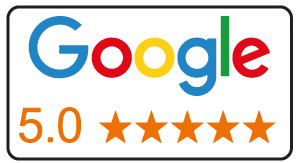Cons of Using Shopify for E-commerce

Shopify has emerged as a leading e-commerce platform, providing entrepreneurs and businesses with the tools to establish and manage online stores. While Shopify boasts numerous benefits, it’s crucial to delve into its drawbacks before making a decision that could significantly impact your online business. In this article, we’ll explore the pros and cons of using Shopify for e-commerce, shedding light on both the platform’s strengths and its limitations.
A Shopify Review From a Web Design Agency
As a web design company specializing in various CMS and e-commerce platforms such as Shopify, Woocommerce, BigCommerce, Wix, and Magento, we are well-equipped to create an article discussing the drawbacks of using a Shopify website. While there are definitely advantages to using Shopify, there are drawbacks that are not widely discussed online, similar to other platforms. The information we are sharing is one of the main reasons why it’s important to carefully select your platform when starting an online store. This information has been gathered from our web developers as well as numerous clients who have approached our web design agency looking to transition away from the Shopify platform.
Disadvantages of Using Shopify for Business
- Cost: Shopify’s pricing is transparent, but hidden costs like transaction fees and additional app expenses can add up.
- Limited Customization: While themes and a drag-and-drop interface are available, extensive design customization may be challenging, particularly for those with unique brand visions.
- App Dependence: Advanced features often rely on third-party apps, introducing complexity and ongoing costs with varying app quality.
- No Email Hosting: Shopify lacks built-in email hosting, necessitating the use of separate services for email marketing campaigns.
- Difficult Exit Strategy: Migrating away from Shopify can be complex and time-consuming.
- Not Ideal for All Businesses: Shopify is best suited for ecommerce businesses, potentially less suitable for offline-focused businesses or large enterprises with complex inventory needs.
The Cons of Using Shopify for E-commerce
1. Limitations on Small Business Support
Despite Shopify’s reputation as a champion of small businesses, it falls short in several critical areas. An issue that has garnered criticism is Shopify’s restriction on product uploads. After exceeding 50,000 products or variants, the platform limits users to adding only 1,000 new products or variants every 24 hours, which can be misleading and frustrating for businesses with extensive inventories.
2. Opaque Storage Limits
Shopify’s storage limitations have left many users perplexed and dissatisfied. The platform does not clearly communicate these limits on its website, and when users seek assistance from customer support, they often encounter unhelpful responses.
3. Resource Constraints for Multiple Employee Accounts
Shopify promotes its support for multiple employee accounts to facilitate simultaneous work on a website. However, this promise often clashes with reality due to inadequate server resources, making collaborative efforts less practical.
4. Customer Support Challenges
Customer support issues persist on Shopify, with users expressing dissatisfaction over time. These issues encompass a lack of escalation in support cases, redundant responses, and a perceived decline in the overall quality of support.
Shopify’s customer support woes can significantly affect businesses relying on timely assistance. Users have reported a lack of meaningful escalation for support cases, leaving complex issues unresolved. The occurrence of repetitive or redundant responses further exacerbates the frustration, making problem resolution a lengthy and frustrating process. Additionally, users have noted a perceived decline in the overall quality of support, which can undermine confidence in the platform’s reliability.
5. Bug-Prone Platform
Shopify proudly claims to be a bug-free platform, but users’ experiences tell a different story. Numerous errors, ranging from problems with importing CSV files to language export errors and glitches in the HTML language editor, have been documented.
Shopify’s bug-related challenges can disrupt the smooth operation of an e-commerce business. Importing and managing data is a fundamental task, and issues with CSV file handling can lead to data integrity problems. Language export errors can hinder localization efforts, impacting internationalization strategies. Problems in the HTML language editor may hinder the customization of storefronts, limiting design options and branding possibilities. These bugs not only affect user experience but also demand valuable time and resources for troubleshooting and resolution.
6. Lack of Transparency in Issue Resolution
The way Shopify handles issues has irked many users, primarily due to a perceived lack of transparency and honesty. Users feel that the platform does not adequately address its limitations and bugs, leaving them in the dark regarding the progress of issue resolution.
7. Slow Product Import Times
An update introduced a new limitation where the import time for products has increased significantly. This delay adversely affects server performance, and users have noted Shopify’s unresponsiveness in addressing these concerns.
8. Neglect of Basic Functionalities
Shopify’s tendency to prioritize external applications over resolving core functionality issues is a point of contention. Users expect fundamental features to work seamlessly, without the need for costly add-ons.
Shopify’s approach to addressing basic functionalities can impact businesses’ day-to-day operations. Instead of delivering a comprehensive and functional platform, the preference for users to rely on third-party applications from the Shopify app store can lead to increased costs and complexity. It raises questions about the platform’s commitment to delivering a robust out-of-the-box solution and may leave users feeling like they are being pushed towards additional expenses.
9. Vendor Lock-In
This is a big one. Shopify’s nature as a hosted platform introduces the concept of vendor lock-in. This means that migrating your store away from Shopify can be a cumbersome and challenging process. You can only take your CSV report with you, requiring you to recreate everything else, from store design to policies, on a new platform.
Vendor lock-in is a significant consideration for businesses looking to establish a long-term online presence. Shopify’s hosted nature means that you rely on the platform for essential hosting services and technical details, which can be advantageous in terms of convenience. However, it also poses a potential risk. If Shopify were to close its doors or no longer meet your needs, you could find yourself in a situation where you must migrate your entire store. This process can be complex, time-consuming, and costly, as critical elements such as store design, blog posts, and store policies must be recreated from scratch.
10. Pricing Complexity

Shopify’s pricing structure can be deceiving, at first glance, Shopify has three pricing plans, but as most will find these will come with hidden costs that may catch users by surprise. While the platform offers a basic plan, it comes with limitations, and additional expenses can quickly accumulate. Most features you would like to add to your online store will require an app from the Shopify app store, which is a monthly charge, the average price a user with medium functionality pays monthly is $211 a month. That is quite a fee to be paying every month for what is essentially hosting. This includes the subscription, their party apps, and not the cost to the company on other fees such as transaction fees.
Understanding the true cost of using Shopify is crucial for budget-conscious businesses. The basic plan may appear affordable, but it often comes with additional expenses. If you opt for payment providers other than Shopify Payments, you’ll incur extra transaction fees. Credit card processing fees apply to all Shopify plans, and while they may decrease with higher-tier plans, they are a recurring cost to consider.
Furthermore, if you require additional functionality, such as a loyalty program or advanced order tracking, you may need to purchase and install third-party apps from Shopify’s marketplace. These costs, when combined, can significantly impact your budget and potentially erode your profit margins. These features with some CRMs like WordPress are paid for since off and never again.
Their pricing leaves a lot to be desired for website costs.
11. Limited Content Marketing Tools
Content marketing plays a crucial role in establishing brand authority and driving conversions. However, Shopify’s built-in blogging feature falls short in several key areas, hindering effective content marketing efforts.
Content marketing is a powerful strategy for engaging and converting customers, but Shopify’s native blogging tool lacks essential features and flexibility. The absence of elements like galleries within the blogging tool can limit your ability to create visually appealing and engaging content. Inflexible blog layouts may restrict your creativity, and the absence of categories means you must rely on cumbersome tagging systems to organize your content effectively.
Additionally, the inability to embed products directly into blog posts can impede your efforts to seamlessly integrate product information with your content. While workarounds exist, such as using third-party apps or external platforms for blogging, these solutions come with their own challenges and may not provide a seamless content marketing experience.
12. Shopify Provides Limited Customization
Shopify’s customization options are not as expansive as some other e-commerce platforms. While you can adjust basic design elements such as colors and fonts, achieving deeper customization often requires hiring professional Shopify developers or investing time in learning the platform’s unique Liquid language.
Customization is a critical aspect of branding and creating a unique online shopping experience. Shopify’s customization options, while suitable for many users, may not meet the needs of those seeking complete control over their store’s design and functionality. To achieve advanced customization, you may need to hire experienced Shopify developers, which can be costly, particularly for businesses with limited budgets.
Alternatively, if you prefer a do-it-yourself approach, you’ll need to invest time and effort in learning Liquid, Shopify’s proprietary coding language for themes. This learning curve can be challenging, especially for users with little coding experience. It’s essential to assess your customization requirements and budget constraints when considering Shopify as your e-commerce platform.
13. Shopify has No Email Hosting
Shopify does not offer email hosting as part of its services. While it provides web hosting for your online store, having a dedicated email address with your shop’s name requires additional steps and integration with third-party email hosting solutions.
Email communication is a fundamental aspect of e-commerce, allowing you to engage with customers, manage inquiries, and build trust. Shopify’s lack of built-in email hosting means that you must explore external options to set up professional email addresses associated with your domain.
While email forwarding can route customer emails to your personal account, it adds complexity to your email setup and may require integration with third-party email hosting services. This additional layer of configuration and potential costs should be considered when evaluating Shopify for your e-commerce needs. These a features that are basics required with every hosting platform.
14. Shopify has a Steeper Learning Curve

Shopify introduces a learning curve for users, primarily due to its use of terminology and interface conventions that may differ from industry standards. Navigating between the front-end and back-end interfaces can also pose challenges
For users accustomed to other e-commerce platforms or website builders, Shopify’s unique terminology and interface may require some adjustment. Concepts such as “collections” instead of “product categories” can lead to initial confusion.
Additionally, the need to switch between the front-end and back-end interfaces to access various store settings can be a hassle for those new to the platform. While the learning curve may not be insurmountable, it’s essential to anticipate the time and effort required to become proficient in using Shopify effectively.
15. Shopify Payments Limitations
Shopify offers its payment processing service called Shopify Payments. While it works well for many businesses, it comes with limitations that can impact high-risk merchants and certain geographic regions.
Shopify Payments is a convenient payment processing solution for many businesses, simplifying transactions and reducing the need for third-party payment gateways. However, it may not be suitable for high-risk merchants or businesses operating in specific regions.
The approval process for Shopify Payments occurs after you’ve opened your store, and its rules may prohibit certain types of businesses, such as those selling CBD products or offering products with extended delivery times. While you can initially set up your store with Shopify Payments, it’s essential to carefully review the platform’s policies to ensure your business type is not on the blacklist.
Failure to do so can result in unexpected account closures and fund holds, which can disrupt your operations and revenue streams. Shopify could enhance transparency during the registration process to help businesses make informed decisions about their payment processing options.
16. Shopify is Not a One-Stop Shop
Despite positioning itself as an all-in-one e-commerce solution, Shopify falls short of being a true one-stop shop for merchants. It lacks certain essential features, such as a built-in CRM, and may require additional third-party tools and services.
While Shopify provides a robust set of e-commerce features, it may not fulfill all the needs of your business. Notably, Shopify does not offer its built-in customer relationship management (CRM) system.
This means that to manage customer relationships, you’ll need to invest in a third-party CRM solution and integrate it with your Shopify store.
While many CRM solutions seamlessly integrate with Shopify, the absence of a native CRM can be surprising to some users who expect Shopify to cover all aspects of running an online store. It’s essential to evaluate your business’s requirements and budget to determine whether additional tools and services are necessary to complement your Shopify store.
17. Shopify has Limited International Functionality
Shopify operates in 15 countries, which may limit your ability to expand your business globally. Your success in international markets may depend on factors such as product suitability and currency support.
Expanding your e-commerce business to international markets can be a strategic growth move. However, Shopify’s availability in only 15 countries means that some regions may not have access to the platform’s services. Additionally, the platform’s currency and language support may not align with the specific needs of your international customer base.
To overcome these limitations, you may need to explore third-party solutions or consider alternative e-commerce platforms that offer broader international functionality. It’s essential to assess your global expansion plans and target markets when choosing Shopify as your e-commerce platform.
18. Shopify themes
Shopify themes are often considered expensive, especially when compared to other options available in the market. Despite their high cost, they also don’t offer a wide variety of options for businesses to choose from. Moreover, their code base, liquid, makes them particularly difficult to maintain. Liquid is a proprietary language developed by Shopify, and it requires a specialized skill set to work with.
Many businesses find that they have to rely on external developers to make even small changes to their Shopify themes, which can add to the cost and time investment. This can be frustrating for businesses that are looking for flexibility and control over their online storefront.
With limited options and a complex code base, businesses may find it challenging to achieve the design and functionality they desire with Shopify themes.
Some extra facts:
While its true WordPress, Magento, and other platforms like Squarespace have their pitfalls Shopify is not the Saint of the group. Should you find any information on this article to be incorrect please send us an mail at [email protected]















